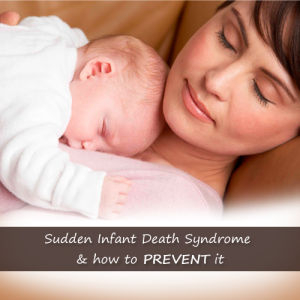 Sudden Infant Death Syndrome (SIDS) is sudden death, of an apparently healthy child, during sleep. The child is usually under the age of one. A diagnosis of SIDS can only be applied after adequate post mortem investigations reveal no other causes.
Sudden Infant Death Syndrome (SIDS) is sudden death, of an apparently healthy child, during sleep. The child is usually under the age of one. A diagnosis of SIDS can only be applied after adequate post mortem investigations reveal no other causes.
Thus, it is a diagnosis by elimination. SIDS can be defined as a sudden death during sleep for no apparent reason.The reasons for occurrence of SIDS are still obscure and medical studies are still figuring out the exact cause of SIDS.
Meanwhile, studies have suggested that SIDS can be prevented by observing a few simple rules at home until the child completes 1 year.
Knowing where the risks are can help you to eliminate them and thereby reduce the risk of SIDS by up to 75%. Use these guidelines to help provide a safe sleep environment for your baby.
• Put your baby to sleep on his back:
Contrary to the old wives tale, that putting an infant to sleep on its stomach will ensure proper
sleep, medical evidence now points to the fact that it can lead to SIDS in 3 out of 5 cases.
• Use a firm Mattress with a fitted sheet:
Do not put baby to sleep (even for a nap) on soft surfaces such as water beds, sofa cushions,
sheepskins or sleeping bags:
• Remove all soft things from the crib or the sleep area.
These include fluffy blankets, soft pillows and duvets. The risk with these items is when they
crumple under a baby’s nose and mouth leaving them no space to breathe.
• Keep baby’s face uncovered:
Make sure that baby’s face stays uncovered and that blankets cannot shuffle up during the
night. It is better to use warm sleep wear on a cold day rather than blankets. If you do use a
blanket make sure that you place baby at the foot of the crib (with his feet to the bottom) and the
blanket firmly tucked under the mattress and does not reach higher than the baby’s chest.
• Do not smoke:
Do not smoke during pregnancy and do not allow others to smoke round your baby.
• Sleep near to your baby:
It is suggested that you should keep baby in the parent’s bedroom until 6 months old. It is
usually not indicated or intended that you share a bed with your infant. It is hard to follow the
SIDS prevention rules in an adult bed. The mattress is usually too soft and the pillows provide addition risks.
• If you use a pacifier for sleep or nap times do not reinsert it once the baby is asleep. Try to take it away as soon as the baby sleeps. If the baby wakes up frequently due to this, now is a good time to form a habit of letting her sleep without the pacifier.
• Do not over clothe the baby. Keep only a couple of layers of clothes on her back at the maximum to avoid heating.The room should be at a temperature that is comfortable for an adult. Do not use too many clothes or blankets.
• Make sure everyone knows these prevention tips:
Some of this advice is new (especially back to sleep) and older carers may not know about it.
It is important that everyone who looks after you baby is aware of the steps to keep your baby safe.